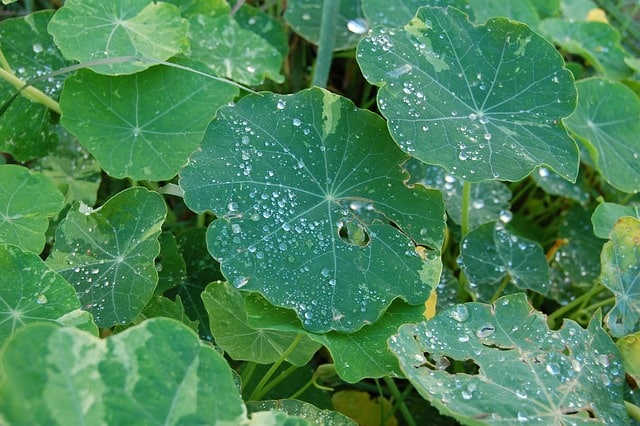White spots on zucchini leaves can be a common problem for gardeners. These spots can be caused by a range of issues, including diseases, pests, and environmental factors. It’s important to understand the root cause of the problem in order to effectively treat white spots on zucchini leaves.
One of the most common causes of white spots on zucchini leaves is powdery mildew. This fungal disease thrives in warm, humid conditions and can quickly spread throughout a garden.
Other diseases that can cause white spots on zucchini leaves include downy mildew and bacterial leaf spot. In addition to diseases, pests such as spider mites and aphids can also cause white spots on zucchini leaves.
Preventing white spots on zucchini leaves is key to maintaining a healthy garden. This can be done by ensuring proper plant spacing, watering plants at the base rather than from above, and providing adequate air circulation.
Proper care for zucchini plants, including regular fertilization and pruning, can also help prevent white spots from developing. In cases where white spots do appear, treatment options include the use of fungicides, neem oil, and other natural remedies.
Check out these other top posts in this category:
Understanding White Spots on Zucchini Leaves
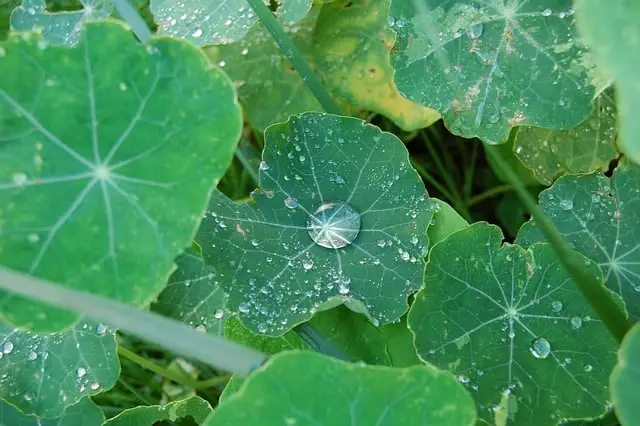
White spots on zucchini leaves can be a common issue for gardeners. Understanding the causes of these spots is important in order to properly treat them and prevent further damage to the plant.
The most common cause of white spots on zucchini leaves is powdery mildew. This fungal disease is easily identifiable by the powdery white substance that appears on the leaves. It can spread quickly and cause the leaves to yellow and wilt.
Another cause of white spots on zucchini leaves is scarring. Insects such as thrips, aphids, and whiteflies can feed on the leaves and leave behind scars in the form of pale discoloration. These scars can be mistaken for powdery mildew but can be distinguished by their location on the leaf.
It is important to properly identify the cause of the white spots before treating them. If the spots are caused by powdery mildew, a fungicide may be necessary. However, if the spots are caused by scarring, a different treatment may be needed.
Preventing white spots on zucchini leaves can be done by regularly inspecting the plant for any signs of disease or insects. Proper pruning can also help prevent the spread of disease. Additionally, providing adequate air circulation and avoiding overhead watering can help prevent powdery mildew.
Common Diseases That Cause White Spots
White spots on zucchini leaves can be caused by a variety of diseases. Some of the most common diseases that cause white spots on zucchini leaves are powdery mildew, downy mildew, yellow mosaic virus, and cucumber mosaic virus.
1. Powdery Mildew
Powdery mildew is a fungal disease that is caused by the fungus Podosphaera xanthii. It is one of the most common fungal diseases that affect zucchini plants. The disease is characterized by the appearance of white spots on the leaves, which can eventually turn brown and die.
Powdery mildew thrives in warm and humid conditions, and it can quickly spread from plant to plant.
To prevent powdery mildew, it is important to keep the zucchini plant dry and well-ventilated. Avoid overhead watering, and instead, water the plants at the base. Remove any infected leaves as soon as they are noticed, and dispose of them properly. Fungicides can also be used to control powdery mildew.
2. Downy Mildew

Downy mildew is another fungal disease that can cause white spots on zucchini leaves. It is caused by the fungus Peronospora parasitica. The disease is characterized by the appearance of yellowish-green spots on the leaves, which can eventually turn brown and die.
Downy mildew thrives in cool and wet conditions, and it can quickly spread from plant to plant.
To prevent downy mildew, it is important to keep the zucchini plant dry and well-ventilated. Avoid overhead watering, and instead, water the plants at the base. Remove any infected leaves as soon as they are noticed, and dispose of them properly. Fungicides can also be used to control downy mildew.
3. Yellow Mosaic Virus
Yellow mosaic virus is a viral disease that can cause white spots on zucchini leaves. It is caused by the virus Cucumovirus. The disease is characterized by the appearance of yellowish-green spots on the leaves, which can eventually turn brown and die. Yellow mosaic virus is spread by aphids and other insects.
To prevent yellow mosaic virus, it is important to control the aphid population by using insecticides or other methods. Infected plants should be removed and disposed of properly.
4. Cucumber Mosaic Virus
Cucumber mosaic virus is another viral disease that can cause white spots on zucchini leaves. It is caused by the virus Cucumber mosaic virus. The disease is characterized by the appearance of yellowish-green spots on the leaves, which can eventually turn brown and die.
Cucumber mosaic virus is spread by aphids and other insects.
To prevent cucumber mosaic virus, it is important to control the aphid population by using insecticides or other methods. Infected plants should be removed and disposed of properly.
Preventing White Spots on Zucchini Leaves
Prevention is the best way to keep white spots from appearing on zucchini leaves. By taking a few simple steps, gardeners can keep their plants healthy and free from disease. Here are some ways to prevent white spots on zucchini leaves:
1. Air Circulation
Good air circulation is essential for preventing white spots on zucchini leaves. Make sure to plant zucchini in an area with good air flow. If plants are growing in a greenhouse or under a cover, make sure to open vents or doors to allow for air circulation.
2. Sunlight
Zucchini plants need full sun to grow and thrive. Make sure to plant them in an area that gets at least 6-8 hours of direct sunlight a day. Lack of sunlight can weaken plants and make them more susceptible to disease.
3. Watering

Overwatering can lead to the development of white spots on zucchini leaves. Water plants deeply once a week, and make sure the soil has good drainage. Zucchini plants prefer dry conditions, so avoid watering too frequently.
4. Healthy Plants
Healthy zucchini plants are less likely to develop white spots. Make sure to fertilize plants regularly and provide them with the nutrients they need to grow strong and healthy. Use disease-resistant varieties when possible.
5. Temperature and Humidity
Zucchini plants prefer warm temperatures and low humidity. Avoid planting them in areas with high humidity or where temperatures frequently drop below 60 degrees Fahrenheit.
6. Space
Zucchini plants need plenty of space to grow. Make sure to plant them at least 2-3 feet apart to allow for good air circulation and to prevent overcrowding.
By following these tips, gardeners can prevent white spots from appearing on zucchini leaves and keep their plants healthy and productive.
Treatment Options for White Spots
When it comes to treating white spots on zucchini leaves, there are a few effective options that gardeners can use. These include using neem oil, creating a vinegar solution, and applying horticultural oil.
1. Using Neem Oil
Neem oil is a natural insecticide that can help control and prevent powdery mildew, the most common cause of white spots on zucchini leaves. To use neem oil, mix it with water according to the instructions on the bottle, and spray the solution on the affected leaves.
Repeat the treatment every 7-14 days until the powdery mildew is gone.
2. Creating a Vinegar Solution
Vinegar is another natural treatment option for white spots on zucchini leaves. To create a vinegar solution, mix equal parts of water and white vinegar in a spray bottle. Spray the solution on the affected leaves, making sure to cover both sides of the leaves. Repeat the treatment every few days until the white spots are gone.
3. Applying Horticultural Oil
Horticultural oil is a petroleum-based oil that can help control powdery mildew and other fungal diseases. To use horticultural oil, mix it with water according to the instructions on the bottle, and spray the solution on the affected leaves.
Make sure to cover both sides of the leaves. Repeat the treatment every 7-14 days until the powdery mildew is gone.
Caring for Zucchini Plants
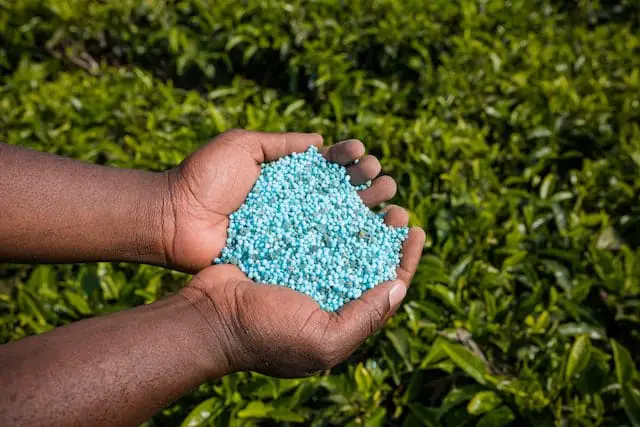
To prevent white spots on zucchini leaves, it is important to properly care for the plants. Here are some tips to keep your zucchini plants healthy and productive:
1. Watering
Zucchini plants need consistent moisture, but overwatering can lead to root rot. Water the plants deeply once or twice a week, depending on weather conditions. Check the soil moisture level by sticking your finger into the soil. If the soil feels dry, it’s time to water.
2. Fertilizing
Zucchini plants need nutrients to produce healthy fruit. Use a balanced fertilizer, such as 10-10-10, every three to four weeks during the growing season. Be careful not to over-fertilize, as this can lead to excessive foliage growth and reduced fruit production.
3. Composting
Compost is a great way to add nutrients to the soil and improve soil structure. Add compost to the soil before planting zucchini, or use it as a top dressing around the plants. Compost also helps retain soil moisture and suppress weeds.
4. Checking for Pests and Diseases
Regularly check zucchini plants for pests and diseases. Early detection and treatment can prevent serious damage. Remove any infected leaves or fruit, and dispose of them in the trash. Keep the area around the plants clean to prevent the buildup of pests and diseases.
5. Pruning
Pruning zucchini plants can help improve air circulation and reduce the risk of fungal diseases. Remove any dead or damaged leaves, and trim back any long or leggy stems. Be careful not to remove too much foliage, as this can reduce fruit production.
6. Mulching
Mulch helps retain soil moisture and suppress weeds. Use a layer of organic mulch, such as straw or shredded leaves, around the base of zucchini plants. Avoid piling the mulch up against the stems, as this can lead to rot.
Dealing with Infected Zucchini Plants
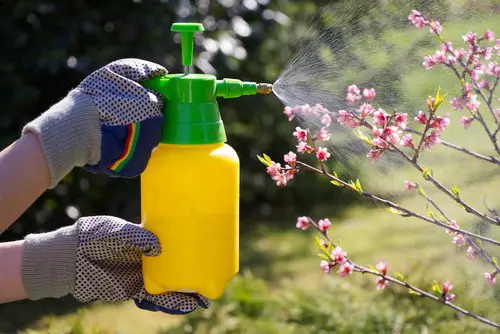
White spots on zucchini leaves can be a sign of an infection, which can cause the plant to die or experience stunted growth. If you notice white spots on your zucchini leaves, it’s important to take action quickly to prevent further damage to your plants.
The first step in dealing with infected zucchini plants is to remove any infected leaves. This will help prevent the spread of the infection to other parts of the plant. Be sure to dispose of the infected leaves away from your garden to prevent the spread of the infection to other plants.
In addition to removing infected leaves, it’s important to give your zucchini plants the proper care to help them recover. This includes providing them with adequate water, sunlight, and nutrients. You may also want to consider using a fungicide to help prevent further infections.
If your zucchini plants are severely infected and have experienced stunted growth, it may be necessary to remove the entire plant. This will help prevent the spread of the infection to other plants in your garden.
Understanding Pests That Affect Zucchini
Zucchini plants are susceptible to a variety of pests that can cause damage to their leaves, stems, and fruit. Understanding the types of pests that affect zucchini plants can help you identify and control them before they cause significant damage.
1. Common Pests
Aphids
Aphids are one of the most common garden pests that affect zucchini plants. These tiny insects are usually green or black and can be found on the undersides of leaves. They suck the sap from the leaves, which can cause them to curl and turn yellow. If left unchecked, aphids can quickly spread and cause significant damage to the plant.
Whiteflies
Whiteflies are another common pest that affects zucchini plants. These tiny insects are usually found on the undersides of leaves and can cause damage by sucking sap from the plant. They can also transmit viruses that can cause further damage to the plant.
Squash Vine Borer
The squash vine borer is a type of moth that lays its eggs on the stems of zucchini plants. The larvae then burrow into the stem and feed on the plant’s tissues, causing the stem to wilt and die. This pest can be challenging to control, and prevention is the best method of defense.
2. Beneficial Insects
Not all insects that affect zucchini plants are harmful. Some insects can actually be beneficial and help control pest populations. Ladybugs, lacewings, and parasitic wasps are all examples of beneficial insects that can help control aphids and other pests that affect zucchini plants.
3. Control Methods
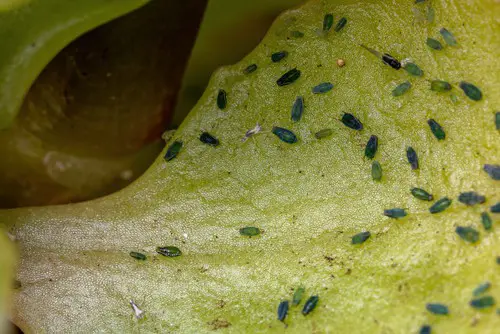
Controlling pests that affect zucchini plants can be challenging, but there are several methods that can be effective. Insecticidal soaps, neem oil, and sticky traps can all help control aphids and whiteflies. Row covers can be used to prevent squash vine borers from laying their eggs on the stems of zucchini plants.
Other Susceptible Plants
Zucchini plants are not the only vegetable plants that are susceptible to white spots on their leaves. In fact, many other plants can be affected by the same fungal disease, powdery mildew. Here are a few other plants that are susceptible to powdery mildew:
- Squash: Squash plants are closely related to zucchini plants and are also susceptible to powdery mildew. In fact, powdery mildew is one of the most common diseases that affect squash plants.
- Cucumber: Cucumber plants are also susceptible to powdery mildew. This disease can cause the leaves to turn yellow and fall off, which can weaken the plant.
- Tomatoes: While tomatoes are not as susceptible to powdery mildew as other plants, they can still be affected by this disease. Powdery mildew can cause the leaves to turn yellow and brown, which can affect the growth of the plant.
- Melons: Melon plants are also susceptible to powdery mildew. This disease can cause the leaves to turn yellow and brown, which can weaken the plant.
- Roses: Roses are also susceptible to powdery mildew. This disease can cause the leaves to turn yellow and brown, which can affect the growth of the plant.
- Other Vegetables: Many other vegetable plants, including beans and peppers, can also be affected by powdery mildew. It is important to monitor these plants closely and take action if you notice any signs of this disease.
If you notice white spots on the leaves of any of these plants, it is important to take action as soon as possible to prevent the spread of the disease. There are several natural remedies that can be used to treat powdery mildew, including baking soda, neem oil, and compost tea.
It is also important to keep the plants well-watered and to remove any infected leaves or plants to prevent the spread of the disease.
Frequently Asked Questions

How do I identify powdery mildew on zucchini leaves?
Powdery mildew is a fungal disease that affects zucchini plants, causing white powdery spots on the leaves, stems, and fruits. The spots may start small and grow larger over time, covering the entire leaf surface.
The leaves may also become yellow, wilted, and eventually die. To identify powdery mildew on zucchini leaves, look for white powdery patches on the upper and lower surfaces of the leaves, especially in warm and humid weather conditions.
What causes white spots on zucchini and cucumber leaves?
There are several causes of white spots on zucchini and cucumber leaves, including powdery mildew, bacterial leaf spot, downy mildew, and spider mites.
Powdery mildew is the most common cause of white spots on zucchini leaves. It is a fungal disease that thrives in warm and humid conditions, and can spread quickly in crowded and poorly ventilated gardens.
What are some natural remedies for powdery mildew on squash?
There are several natural remedies for powdery mildew on squash that can help control the disease and prevent it from spreading. These include spraying the plants with a mixture of baking soda and water, using a neem oil spray, applying a milk spray, or using a compost tea.
These remedies work by changing the pH of the leaf surface, creating an unfavorable environment for the fungus to grow.
Can I prevent white spots on zucchini leaves?
Yes, you can prevent white spots on zucchini leaves by taking several preventive measures, such as planting disease-resistant varieties, spacing the plants properly, providing adequate air circulation, avoiding overhead watering, and removing infected leaves and debris from the garden.
These measures can help reduce the risk of powdery mildew and other fungal diseases that cause white spots on zucchini leaves.
What is the best fungicide for treating powdery mildew on squash?
The best fungicides for treating powdery mildew on squash are those that contain copper, sulfur, or potassium bicarbonate. These fungicides work by killing the fungus and preventing it from spreading to other parts of the plant.
It is important to follow the instructions on the label carefully and apply the fungicide as directed to avoid damaging the plant.
How do I treat yellowing zucchini leaves with white spots?
To treat yellowing zucchini leaves with white spots, you can use a combination of natural remedies and fungicides. First, remove the infected leaves and debris from the garden.
Then, spray the plants with a mixture of baking soda and water, or a neem oil spray. If the disease persists, you can apply a copper or sulfur fungicide, following the instructions on the label carefully.
It is important to treat the disease early to prevent it from spreading to other plants in the garden.

Hey, I’m Lisa and I’ve been an avid gardener for over 30 years. I love writing, talking and living in the garden! Feel free to connect with me on my socials below

